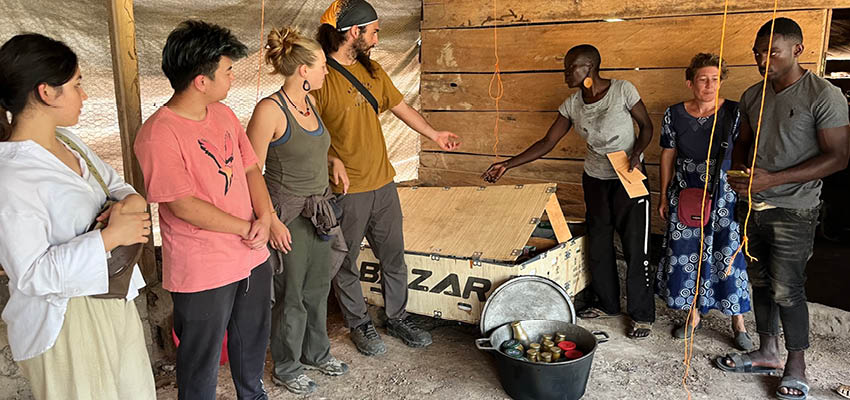
Developing a brooder to keep baby chicks warm enough to survive at night without relying on mains electricity for small-scale, off-grid farmers.
MIT D-Lab Class
Applications of Energy in Global Development
Student team
MIT students unless otherwise noted.
- Brooke Bao, Wellesley '26
- Lukas Hanson-Puffer '24
- Megan Alexis Harvey '25
- Lawrence Siddhartha Benninger, SPURS Fellow
- Tyler Ea '25
Community partners
- BiObala Farm
- Africa Solar Generation
Country
Cameroon
Problem framing
One of the most vital problems that Cameroon poultry farmers face is keeping young chicks alive, especially during the first 3-4 weeks. The chick mortality rises exponentially with a drop in temperature and higher chick mortality rates can cause significant challenges for the farmers’ livelihoods. Most poultry farmers currently use wood fires next to the brooders or use light bulbs to heat the chick brooders internally. The use of wood fires poses many risks for the live chicks. The main danger is suffocation from smoke and fumes, causing farmers to lose entire batches of up to 200 chicks.
Market context
Poultry farming in Cameroon forms a vital part of local economies and diets. 1.5 million people rely on poultry farming as their primary source of income, and chicken represents 42% of the country’s domestic meat consumption. Although the agricultural sector employs 70% of workers, the market is extremely fragmented and is composed of primarily small-scale farmers with little access to capital. Following an increase in domestic production after 2021, the Cameroonian poultry market is now worth 1.2 billion CFA ($2 million) or 4% of GDP.
Competitive analysis
The first solution was developed by ASG, a Swiss Cameroonian solar company working on providing photovoltaic systems to regions of Cameroon that have limited access to electricity. ASG developed a solar-powered brooder box in 2020, but its functionality was impeded by a limited understanding of solar panel repairs and the substantial initial cost of $600 for the unit.
Groups at D-Lab started focusing on developing the use of phase-changing materials, designing thermal batteries filled with phase-change materials (PCMs), specifically beeswax. The current solution faces issues such as only being warm enough for six hours, a high initial purchase cost of $250 ($160 from wax alone), and poor ease of use due to the weight of hot wax.
Solution
We wanted to improve the efficiency of the thermal batteries by insulating the PCM to slow the heat release, thereby requiring less expensive PCM. We conducted three tests:
- “Is an insulation layer viable?”
- “What are the best materials to use for thermal batteries?”
- “Which battery produced the most consistent ambient box temperature?”
After testing multiple types of insulation, the thermal battery with a paraffin core with a vermiculite insulating layer showed heat releases that were slower and therefore superior to the others and the previous solution. We therefore chose to pursue this in our final prototype.
Next steps
Three members of our team (Brooke, Megan, and Tyler) have decided to travel to Cameroon for approximately three weeks during MIT's January Independent Activities Period (IAP). During the initial stages, we will first use the current Cameroon box design and possibly modify the design depending on our observations. The double-layered thermal batteries should offer advantages in controlling the heat transfer rate of the batteries, and we will use our experimental data to compare with data gathered by previous field tests.
Additionally, our time in Cameroon will present possible benefits in pitching and scaling the brooder box idea to appeal to other farmers. We plan on interacting with a larger sample of farmers and gauging their interest in our concept. Furthermore, we will also gather information on the feasibility of composting Obala.
Contact
Dan Sweeney, MIT D-Lab Lecturer and Research Scientist






